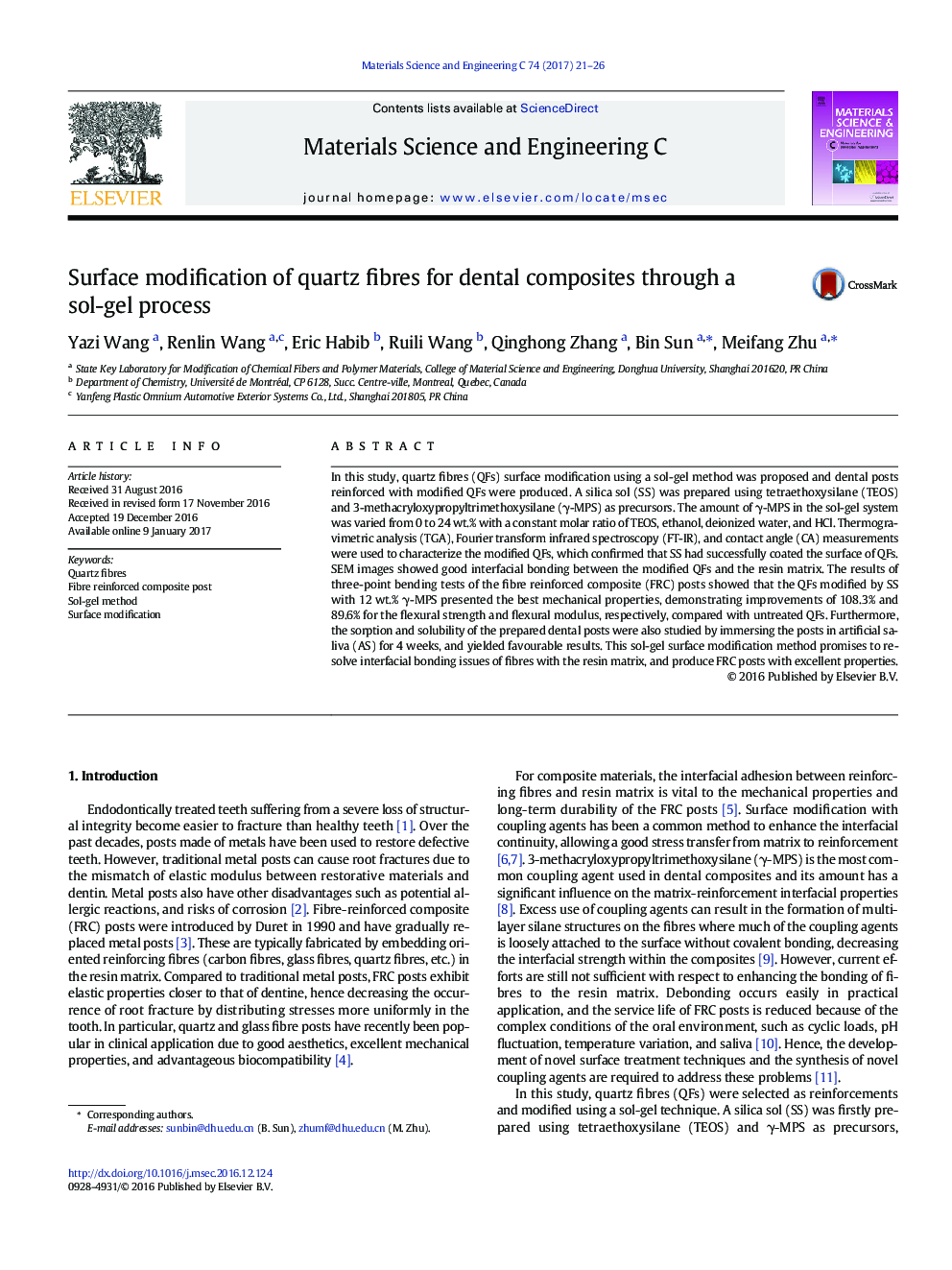| کد مقاله | کد نشریه | سال انتشار | مقاله انگلیسی | نسخه تمام متن |
|---|---|---|---|---|
| 5435002 | 1509147 | 2017 | 6 صفحه PDF | دانلود رایگان |
- Quartz fibres (QFs) were modified using a sol-gel method with tetraethoxysilane (TEOS) and 3-methacryloxypropyltrimethoxysilane (γ-MPS) as precursors.
- The dental posts reinforced with modified QFs demonstrated an improvement of 108.3% and 89.6% for the flexural strength and flexural modulus, respectively, compared with dental posts reinforced with untreated QFs.
- The sorption and solubility of the dental posts were studied by immersing the posts in artificial saliva (AS) for 4 weeks, and yielded favourable results.
In this study, quartz fibres (QFs) surface modification using a sol-gel method was proposed and dental posts reinforced with modified QFs were produced. A silica sol (SS) was prepared using tetraethoxysilane (TEOS) and 3-methacryloxypropyltrimethoxysilane (γ-MPS) as precursors. The amount of γ-MPS in the sol-gel system was varied from 0 to 24 wt.% with a constant molar ratio of TEOS, ethanol, deionized water, and HCl. Thermogravimetric analysis (TGA), Fourier transform infrared spectroscopy (FT-IR), and contact angle (CA) measurements were used to characterize the modified QFs, which confirmed that SS had successfully coated the surface of QFs. SEM images showed good interfacial bonding between the modified QFs and the resin matrix. The results of three-point bending tests of the fibre reinforced composite (FRC) posts showed that the QFs modified by SS with 12 wt.% γ-MPS presented the best mechanical properties, demonstrating improvements of 108.3% and 89.6% for the flexural strength and flexural modulus, respectively, compared with untreated QFs. Furthermore, the sorption and solubility of the prepared dental posts were also studied by immersing the posts in artificial saliva (AS) for 4 weeks, and yielded favourable results. This sol-gel surface modification method promises to resolve interfacial bonding issues of fibres with the resin matrix, and produce FRC posts with excellent properties.
Journal: Materials Science and Engineering: C - Volume 74, 1 May 2017, Pages 21-26
